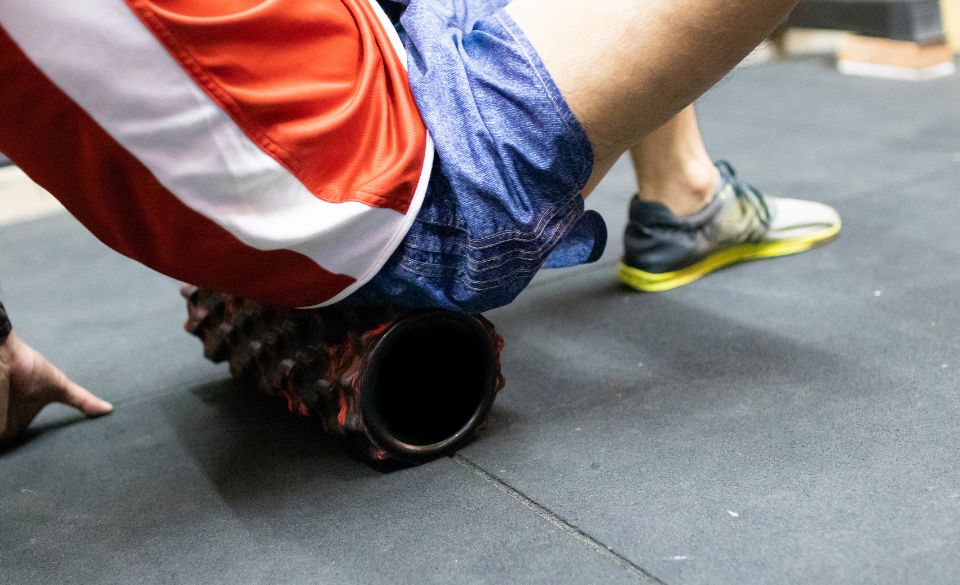
Why Are My Glutes So Tight: A Complete Guide
Page Contents
If you’ve ever experienced tightness in your glutes, you know how uncomfortable it can be. Tight glutes can affect your mobility, posture, and overall well-being. But why do they become tight in the first place? In this article, we’ll explore the various causes of tight glutes, the symptoms to watch out for, and effective ways to loosen them up. So, let’s dive in and unravel the mystery of tight glutes!
What Causes Tight Glutes?
Tight glutes can have various causes that contribute to their tightness. One common factor is leading a sedentary lifestyle, where prolonged periods of sitting, such as at a desk job or in front of a computer, can keep the glute muscles in a shortened position, leading to tightness and potential weakness.
Another cause of tight glutes is the lack of regular stretching exercises. Without proper stretching, the muscles can become tight and lose flexibility, making them more prone to tightness and discomfort. It’s essential to incorporate regular stretching routines to maintain muscle length and promote healthy movement patterns.
Engaging in activities that place excessive strain on the glute muscles without allowing for proper rest and recovery can also lead to tightness. Activities like running or cycling can overuse the glutes and cause them to become tight. Additionally, imbalances in muscle strength or flexibility between the glutes and other surrounding muscles can contribute to tightness.
Injuries or trauma to the glute muscles can result in scar tissue formation, leading to tightness and restricted movement. Previous strains or tears in the glute muscles can also contribute to muscle tightness. Inflammatory responses following an injury can further exacerbate the tightness.
Stress and tension can manifest physically in the body, including in the glute muscles. Emotional or psychological stress can lead to increased muscle tension throughout the body, contributing to tightness and discomfort. It’s important to manage stress levels through relaxation techniques and stress-reducing activities.
Structural factors, such as anatomical variations or imbalances in the pelvic area, can also play a role in glute tightness. These structural factors can affect muscle alignment and contribute to tightness in the glutes.
What Are the Symptoms of Tight Glutes?
When the glute muscles become tight, several symptoms may arise, including:
Pain or Discomfort: Tight glutes can cause pain or discomfort in the buttocks region. This pain may be localized or radiate down to the hips, lower back, or even the legs. It can range from a dull ache to sharp, shooting pain.
Restricted Range of Motion: Tight glutes can limit your range of motion in the hips. Activities that require hip extension, such as lunges or deep squats, may become challenging or uncomfortable. You may feel stiffness or tightness when attempting these movements.
Postural Changes: Tight glutes can impact your posture. They may contribute to an anterior pelvic tilt, where the pelvis tilts forward, leading to an exaggerated curvature in the lower back. This can result in a swayback posture and potential imbalances in the hips and spine.
Muscle Imbalances: Tight glutes can disrupt the balance between the muscles of the hip complex. This imbalance may affect the surrounding muscles, such as the hip flexors or lower back muscles. As a result, you may experience weakness or tension in these areas.
Nerve Symptoms: In some cases, tight glutes can compress nearby nerves, leading to additional symptoms. This may include tingling, numbness, or shooting pain that radiates down the legs, commonly known as sciatica.
If you experience any of these symptoms, it’s important to address the tightness in your glutes through targeted stretching, strengthening exercises, and lifestyle modifications. Consulting with a healthcare professional or physical therapist can provide guidance tailored to your specific needs and help alleviate the discomfort caused by tight glutes.
How Do You Loosen Tight Glutes?
Fortunately, there are effective strategies to loosen tight glutes:
1. Stretching Exercises: Incorporate regular stretching exercises that target the glute muscles into your routine. Examples include the pigeon pose, figure-four stretch, or standing glute stretch. Hold each stretch for about 30 seconds and perform them on both sides.
2. Foam Rolling: Using a foam roller, roll your glutes to release tension and tightness. Apply gentle pressure and roll back and forth over the targeted area. Focus on any specific trigger points or areas of discomfort.
3. Strengthening Exercises: Perform exercises that strengthen your glutes, such as squats, lunges, or glute bridges. Strengthening the glute muscles can help alleviate tightness by improving their overall strength and stability.
4. Massage Therapy: Consider seeking professional help through massage therapy. A skilled massage therapist can target the specific areas of tightness and use various techniques to release tension in the glutes.
Best Stretches And Exercises For Tight Glutes
When it comes to addressing tight glutes, incorporating a combination of stretches and exercises can be highly beneficial. Here are some of the best stretches and exercises to help relieve tightness in the glute muscles:
Stretches:
Pigeon Pose: Start in a kneeling position with one leg extended straight back and the other leg bent in front of you. Slowly lower your upper body over the bent leg, feeling the stretch in the glute of the extended leg. Hold the position for 30 seconds and repeat on the other side.
Figure-Four Stretch: Lie on your back with both knees bent. Cross one ankle over the opposite knee, creating a figure-four shape. Gently pull the bottom leg towards your chest, feeling the stretch in the glute of the crossed leg. Hold for 30 seconds and switch sides.
Seated Glute Stretch: Sit on the edge of a chair or bench with one foot crossed over the opposite knee. Keeping your back straight, gently lean forward, feeling the stretch in the glute of the crossed leg. Hold for 30 seconds and switch sides.
Exercises:
Glute Bridge: Lie on your back with knees bent and feet flat on the ground. Press through your heels and lift your hips off the ground, engaging your glutes. Squeeze your glutes at the top and then slowly lower your hips back down. Perform 10-15 repetitions.
Clamshells: Lie on your side with your knees bent and heels together. Keeping your feet together, lift the top knee away from the bottom knee, feeling the contraction in your glutes. Lower the knee back down. Perform 10-15 repetitions on each side.
Fire Hydrants: Start on all fours with your hands directly under your shoulders and knees under your hips. Lift one knee out to the side, keeping it bent at a 90-degree angle, and squeeze your glutes. Return to the starting position and repeat on the other side. Perform 10-15 repetitions on each side.
Remember, it’s essential to listen to your body and perform these stretches and exercises with proper form. Start with gentle movements and gradually increase the intensity as your muscles loosen up. If you experience any pain or discomfort, it’s advisable to consult with a healthcare professional or a certified trainer for guidance specific to your needs. Regularly incorporating these stretches and exercises into your routine can help alleviate tightness in the glutes and promote improved flexibility and mobility.
How Long Does It Take to Loosen Tight Glutes?
The duration it takes to loosen tight glutes can vary depending on individual factors, such as the severity of tightness, consistency of stretching and strengthening exercises, and overall lifestyle habits. With regular stretching and strengthening exercises, you can start experiencing improvements within a few weeks. However, for more chronic cases or severe tightness, it may take several months of consistent effort to see significant changes. Remember, consistency is key when it comes to loosening tight muscles.
Why Are My Glutes So Tight – The Conclusion
Tight glutes can be a result of a sedentary lifestyle, lack of stretching, or overuse. The symptoms of tight glutes include pain, restricted range of motion, and postural changes. Loosening tight glutes can be achieved through stretching exercises, foam rolling, strengthening exercises, and massage therapy. The timeframe for loosening tight glutes varies, but with consistent effort, improvements can be experienced within a few weeks to a few months.
Remember to listen to your body, be patient, and prioritize self-care. Incorporate stretching and strengthening exercises into your routine, take breaks from prolonged sitting, and maintain an active lifestyle. If the tightness persists or is accompanied by severe pain, it’s advisable to consult with a healthcare professional for a thorough evaluation.
Don’t let tight glutes hold you back from living an active and pain-free life. By understanding the causes and implementing appropriate strategies, you can loosen those tight glutes and enhance your overall well-being. So, start stretching, rolling, and strengthening, and say goodbye to tight glutes for good!




